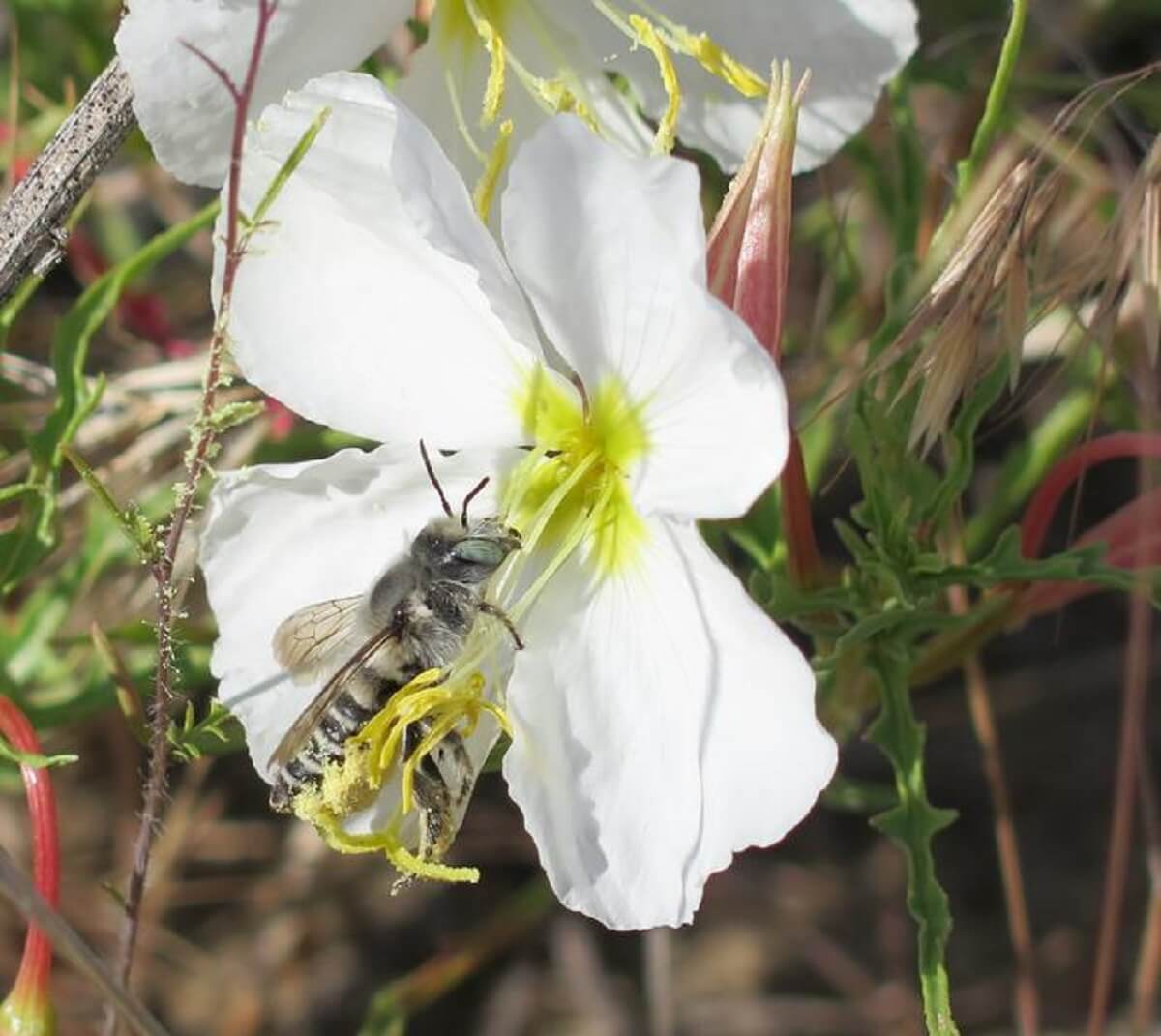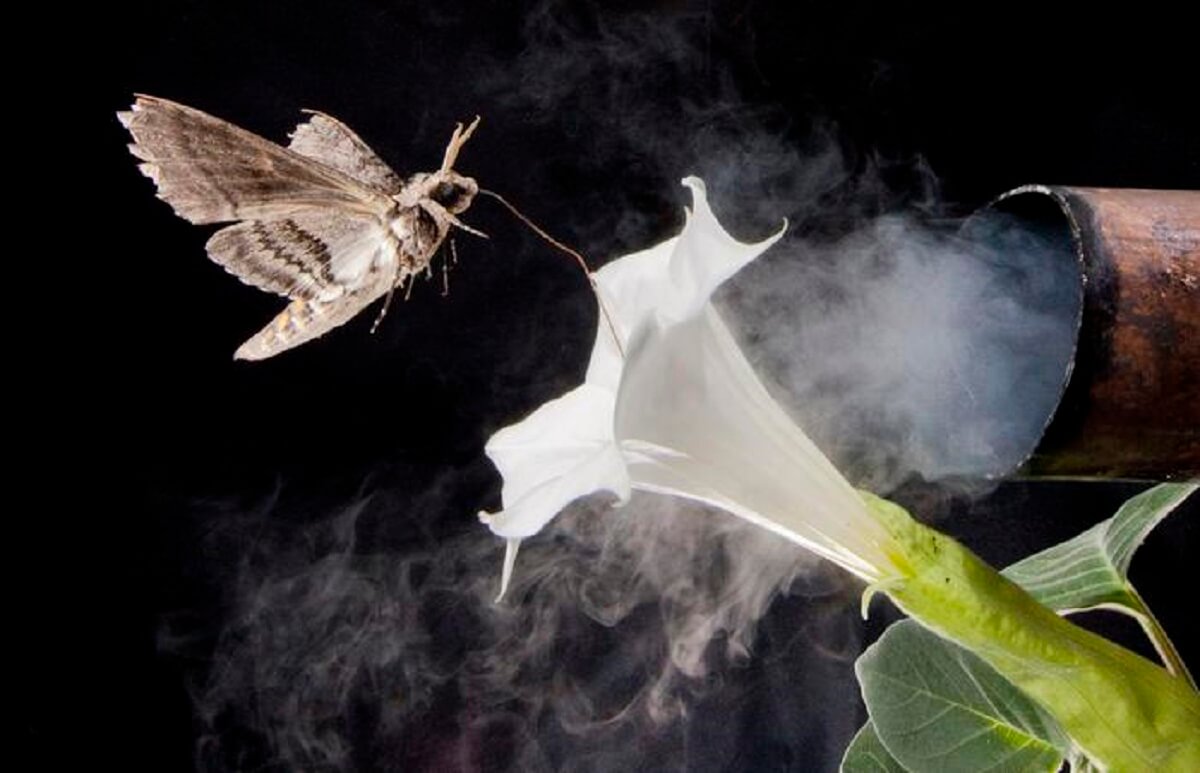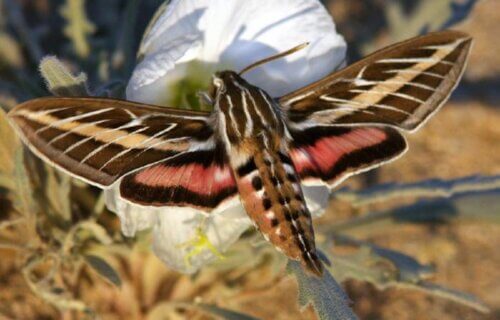SEATTLE — Pollution (and the people making it) is damaging flower species that rely on nighttime pollination, a new study warns. The research reveals that air pollution reduces the scent signals essential for nocturnal pollinators to find these flowers. This reduction is attributed to chemicals released into the air through gas and coal combustion from vehicles, power stations, and natural occurrences such as wildfires and lightning.
A team at the University of Washington says these activities trigger a chemical reaction that generates nitrate radicals (NO3) in the atmosphere, which in turn block a flower’s scent. Their study highlights the critical relationship between approximately 180,000 species of flowering plants and their pollinators, noting that over 70 species of pollinators are at risk of extinction or are already endangered.
“The NO3 is really reducing a flower’s ‘reach’ — how far its scent can travel and attract a pollinator before it gets broken down and is undetectable,” says Jeff Riffell, a Biology Professor at the University of Washington, in a media release. “Pollution from human activity is altering the chemical composition of critical scent cues, and altering it to such an extent that the pollinators can no longer recognize it and respond to it.”

This research focuses on the pale evening primrose, a plant commonly found across the western U.S. in arid climates. The white flowers collected from eastern Washington emit a fragrance that lures various pollinators, including nocturnal moths, which are among its most crucial pollinators.
The study discovered that interaction with NO3 nearly eliminated certain scent chemicals. Moths, which can sense smells from miles away and have a sense of smell thousands of times more acute than humans, were significantly impacted. Experiments involving the white-lined sphinx and the tobacco hawkmoth in a wind tunnel and with a computerized odor stimulus system revealed that, upon the introduction of NO3, the ability of these moths to detect the flower scent was drastically reduced. The tobacco hawkmoth’s detection rate fell to 50 percent, while the white-lined sphinx, a key pollinator for the primrose, failed to locate the flower altogether.
The team found that moths visited a synthetic flower emitting an unchanged scent as frequently as they did a real one. However, when the scent was pre-treated with NO3, the visitation rate by moths plummeted by up to 70 percent.
The study also notes that sunlight breaks down NO3 during the day, reducing its impact on daytime pollution but still leaving nocturnal flowers vulnerable. Regions most affected by this disruption in plant-pollinator dynamics include western North America, much of Europe, the Middle East, Central and South Asia, and southern Africa.

“Our approach could serve as a roadmap for others to investigate how pollutants impact plant-pollinator interactions, and to really get at the underlying mechanisms,” says Joel Thornton, another Professor at the University of Washington. “You need this kind of holistic approach, especially if you want to understand how widespread the breakdown in plant-pollinator interactions is and what the consequences will be.”
The findings are published in the journal Science.
You might also be interested in:
- 50 years of research reveals why bees are producing less honey
- 200-million-year-old mass extinction event may be happening again right now
- Evolutionary dead end? Flowers were more diverse 100 million years ago
- Cicadas could soon be everywhere — Scientists are using their wings to create self-cleaning technology
SWNS writer Sharin Hussain contributed to this report.
